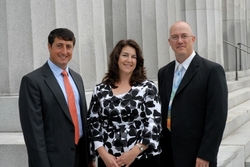
ATLANTA (PRWEB) October 14, 2008
The industry’s overall growth is also garnering attention, according to Wm. Scott Page, president and CEO of The Lifeline Program. Last week, the size of the industry was reported to have doubled in 2007 to $ 12 billion in face value of life insurance policies sold.
“As financial conventions fall by the wayside, the life settlement industry looks more attractive than ever,” said Wm. Scott Page, president and CEO of The Lifeline Program. “We believe that major financial institutions will soon begin taking a harder look at this industry, and we believe our company is well-positioned. To that end, we are seeking serious financing relationships to help capitalize on the business potential.”
According to Page, life settlements are gaining momentum for the following reasons:
Non-correlated assets can generate an attractive yield. The markets have little effect on life settlement yields. One of the key aspects of a life settlement is that the investor earns a payout on the demise of the policyholder. The strength or weakness of the stock market does not impact the life settlement arena. Life settlement assets are backed by highly rated financial institutions. Life settlements are performed on policies held by carriers with A.M. Best ratings of “A” or better, so the payouts are regulated and solid. Trading platforms exist. Several “household name” institutions have developed or are developing platforms to trade life settlement policies and portfolios. Securitization is on the horizon. Though it may not be this year, securitization is definitely in the future for life settlements. Portfolio analysis comprising the past several years proves that life settlement portfolios will perform predictably and generate consistent cash flow. Third party tracking, servicing and underwriting simplify the investment. In a sign of a maturing industry, life settlements are not necessarily managed by one-stop shops anymore. The size and scope has made it profitable for third party companies to manage tracking, servicing and some underwriting, thus easing entry by financial players. “For years we have said that life settlements are a safe haven during times of market uncertainty,” said Page. “The potential for our industry has never been greater.”
The Lifeline Program, based in Atlanta, Ga., is a division of Wm. Page & Associates, Inc. Founded in 1989, the company actively partners with insurance agencies and broker dealers to establish profitable and ongoing life settlement business lines. For more information on life settlements, contact Wm. Page of The Lifeline Program at 770-724-7300 or visit http://www.thelifeline.com.








